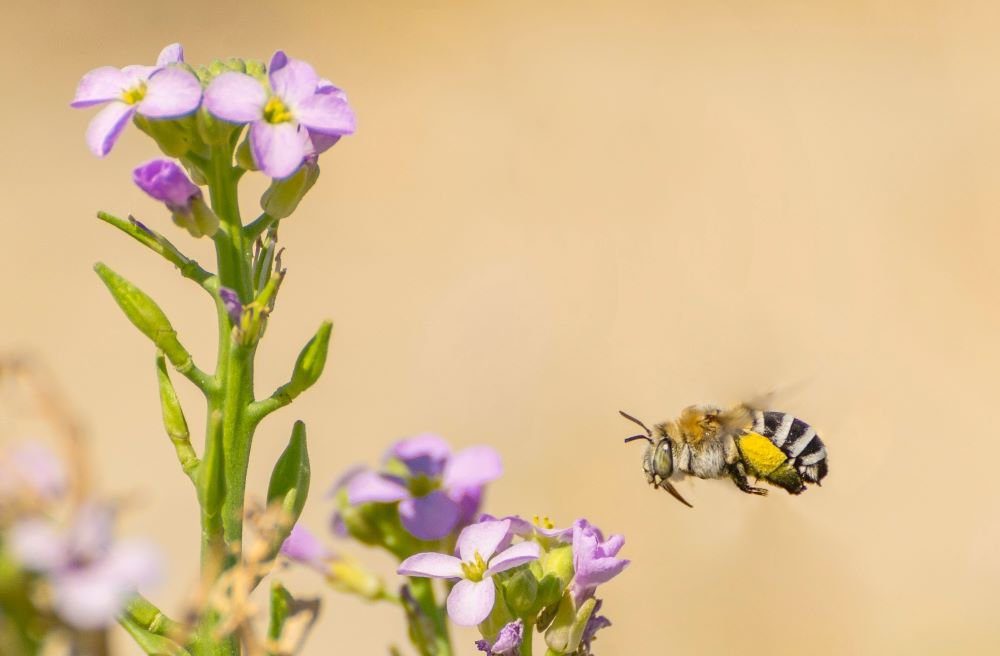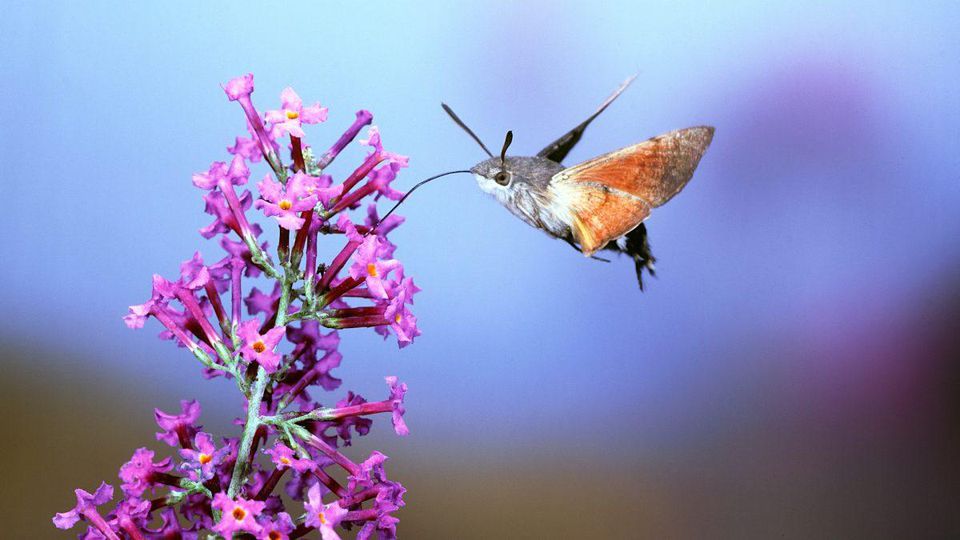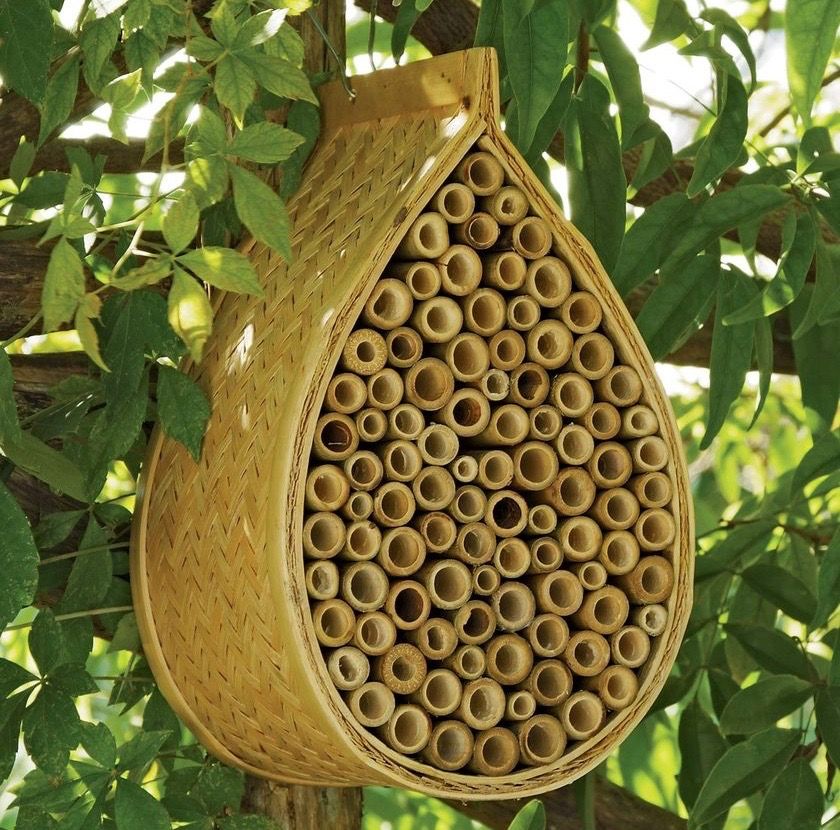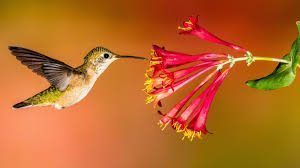How To Plant a Pollinator Garden for National Pollinator Week
By Ellen C. Wells

Thank pollinators for the vast variety of flowers in the world and for the food you eat.
If you put your ear close to your fruit smoothie, your quinoa kale bowl, even your tomato-laden bacon cheeseburger, you can hear it—the buzz emanating from your food. Without pollinators—from hummingbirds to butterflies, moths to mason bees—much of the food we eat wouldn’t make it to our plates.
In the flower garden, bees and other pollinators are busy brewing up surprises. More often than you would think a genetic sport has turned into a stunning new hybrid. The other sports, eh. Pollination is what has given one branch of the plant world the chance to evolve. The other branch simply clones itself, over and over, like the quaking aspens in Colorado.

In terms of fruit and vegetables, pollination is essential. Without it, strawberries would be shriveled and puckered. Zucchini? They wouldn’t make it beyond the wilting yellow flower stage.
Think about it—at least one out of three bites of food you eat is the result of pollinators’ work. Imagine if they were gone.
It’s not impossible.
Pollinators, especially honeybees, have had a hard time of it with issues such as Colony Collapse Disorder, agricultural insecticides and climate change. By the way, the sharp-eyed among you would have noticed that the above is not a honey bee. It has only two pairs of wings. This is a transverse flower fly, and the information is brought to you by the North Branch Nature Club in Vermont, which has a wonderful website about insects that look like bees. The transverse flower fly is every bit as much of a pollinator as a bee, but it has only two wings, not four. And notice the big, flylike, compound eyes.
So, instead of shooing insects away from your vegetable gardens, here are some tips for both welcoming them in, and boosting their numbers.

How to Identify Your Potential Pollinators
Armed with that information, you’ll know their preferences for food and shelter. Pollinators include not just bees but nighthawk moths, flies (ahem), hummingbirds, butterflies, beetles (like the ladybug) and bats (especially for fruit). There are also tropical animals, like geckos and lemurs that are important in pollination, but for most gardeners in America, especially in the daytime, the visible pollinators will be bees, butterflies and, if you are lucky, hummingbirds. At twilight, you might see a hummingbird hawkmoth, as below.
5 Key Tips To Remember When Planting A Pollinator Garden
The following tips will help you create the perfect garden to attract and support the pollinators of the world.
1. Plant Flowers in and Near Your Vegetable Garden
Flowers on vegetable plants aren’t all that flashy, so pollinators often can’t find them. Planting showy flowers like sunflowers or zinnias and including native perennials that local pollinators are familiar with will help lure them to the garden.
Trial strip flower gardens in England have been planted to draw pollinators into commercial crops that need insects. They are 36 feet wide and approximately 300 feet apart.
The plants include oxeye daisy, red clover, common knapweed and wild carrot. The GPS-guided harvesters are programmed to avoid cutting down the strips of wildflowers, leaving them as a refuge year around.

In Switzerland, similar test strips of wildflowers include cornflowers, coriander, buckwheat, poppy and dill.
Organic gardeners in the United States have long planted wildflowers throughout their orchards because they say it not only attracts pollinators to their trees but it draws natural predators to insects that might prey on the fruit.
And make sure to plant marigolds near the tomatoes.
2. Don’t Forget To Include Various Herbs
The flowers of lavender and rosemary bring the bees and a whole lot of other pollinators while also being staple pantry ingredients. Let some of your herbs—dill, cilantro, basil—grow long enough to produce flowers and food for passing pollinators.
3. Always Remember Location, Location, Location
Put the flowers in your vegetable garden in a sunny spot and away from disturbances such as wind and foot traffic.

4. Plant Pollinator-Attracting Flowers In Groups
Single flowers here and there are hard to find. Plant pollinator-attracting flowers in groups of about 10 square feet that scream, “I’m here!”
5. Be Sure To Give Pollinators Shelter
Pollinators need protection so they stick around. Provide places for them to get out of the elements, rest and reproduce. Options are hives, hollow tubes, hole-filled wooden blocks and even bare ground. You can buy preconstructed bee houses for single types of bees, like the one shown for mason bees, which don’t sting, about $21, from Gardener’s Supply Company.
Note that a bee house must be stable, and not swing or move. Or you can construct your own, which might attract a variety of bees. The rule to remember is that any bee hotel should be in full sun, protected from rain and at least three feet off the ground. It should face south east or south, and there should not be any vegetation obscuring the entrance to the tunnels. This is not, obviously a hive for honeybees, and bumblebees make their own nests, either in the ground, or under the eaves of buildings.
Helping pollinator populations bounce back will take the work of not just governments and corporations, but also the involvement of everyday people learning, caring about and acting in the best interest of pollinating creatures of all kinds. It’s also a great way to introduce your kids to the joys of flowers and gardening while teaching them about certain birds and bees, so to speak!
To learn about how you can please your neighborhood pollinators, visit the National Pollinator Garden Network.
